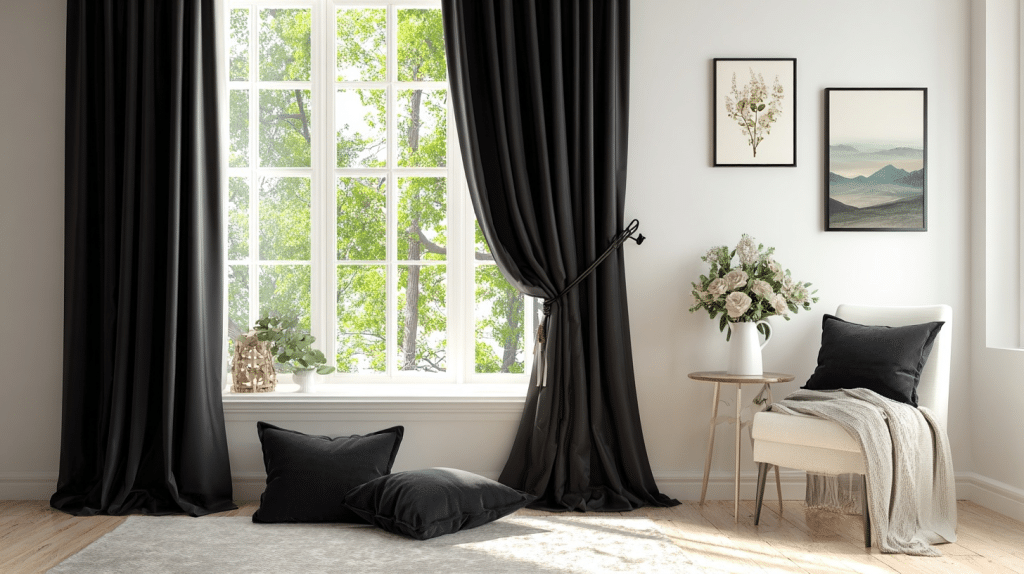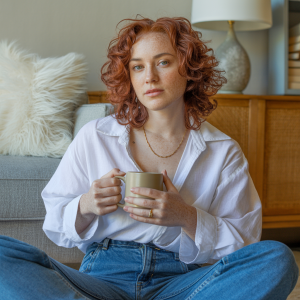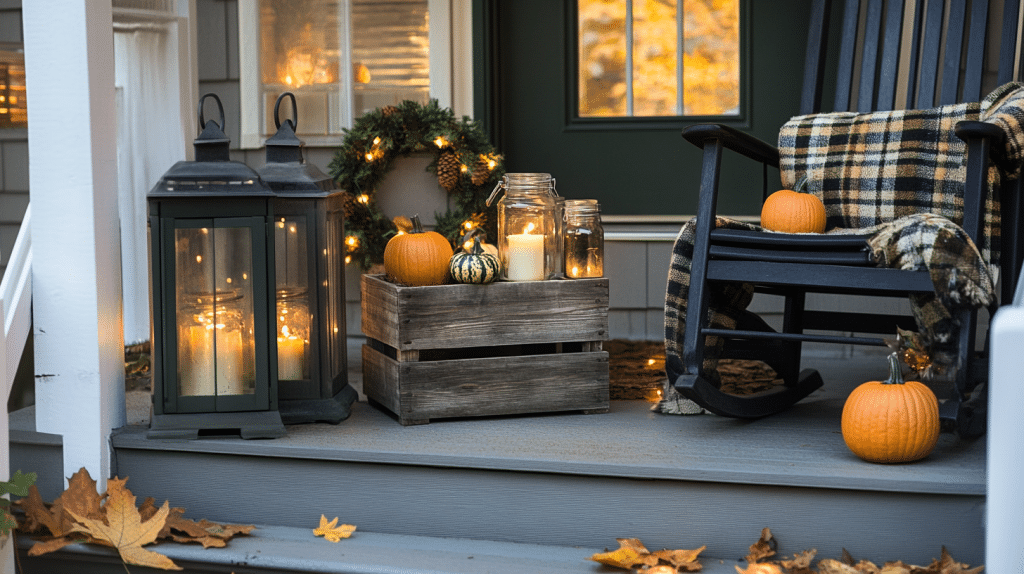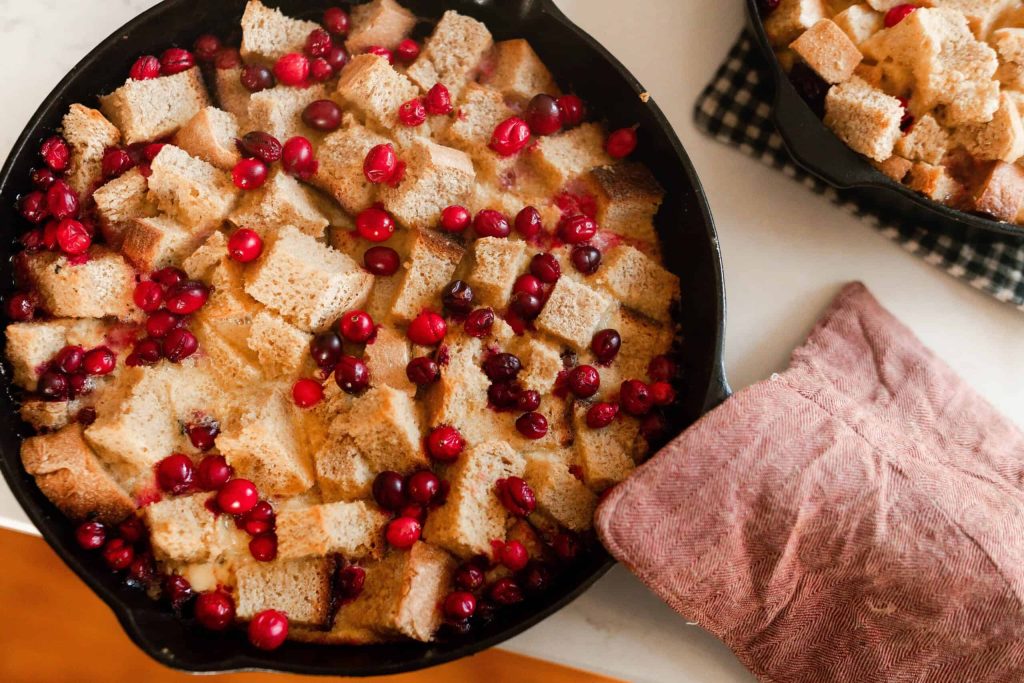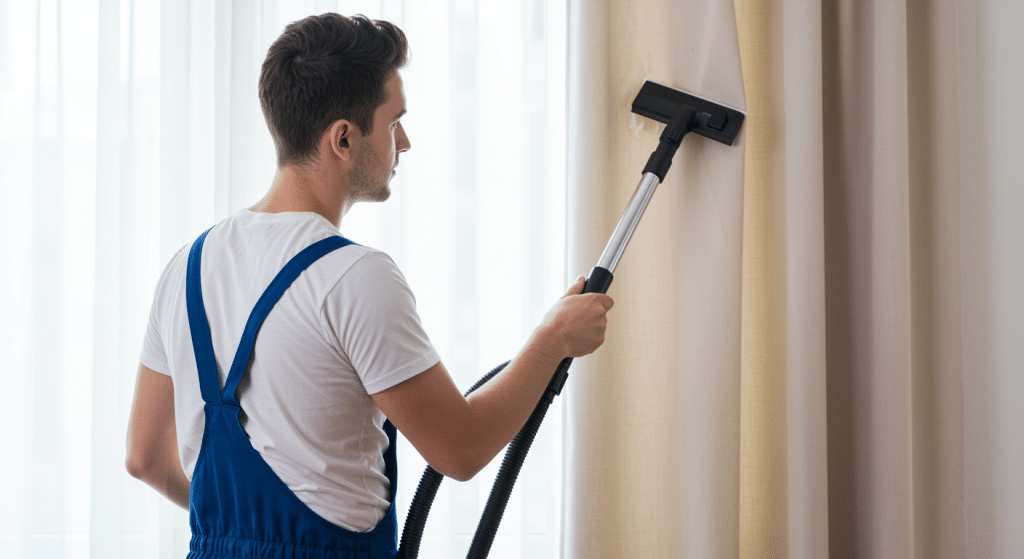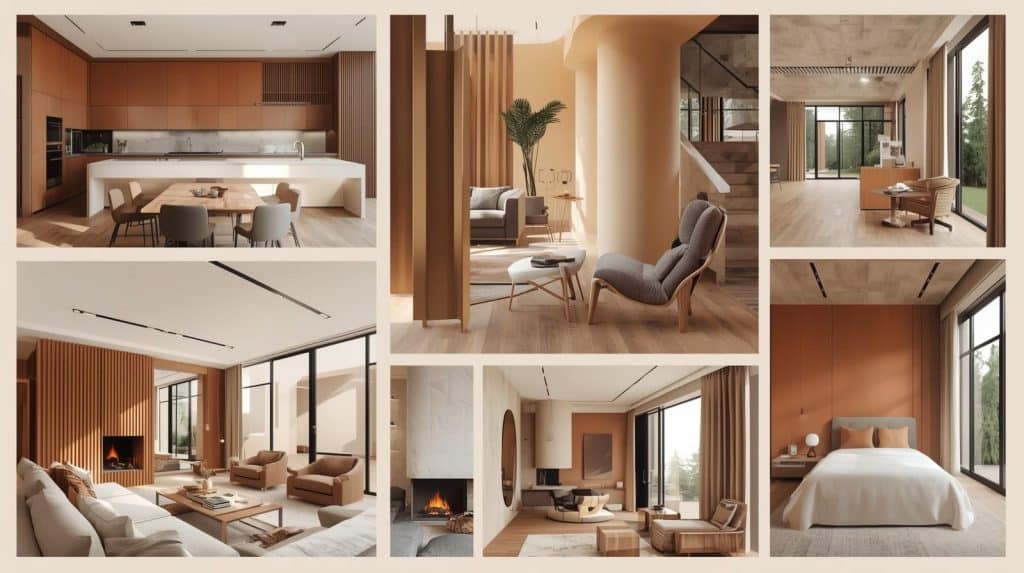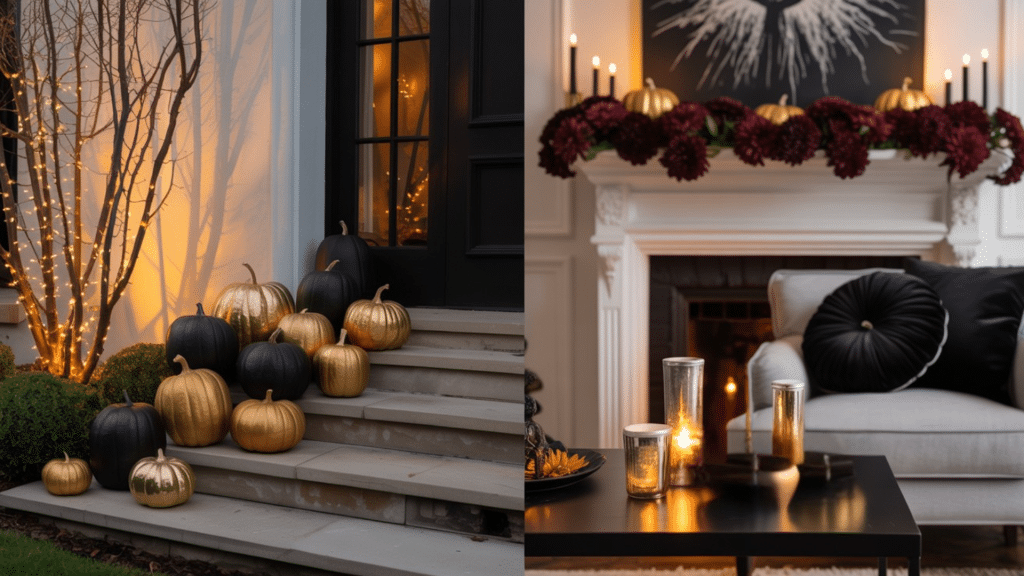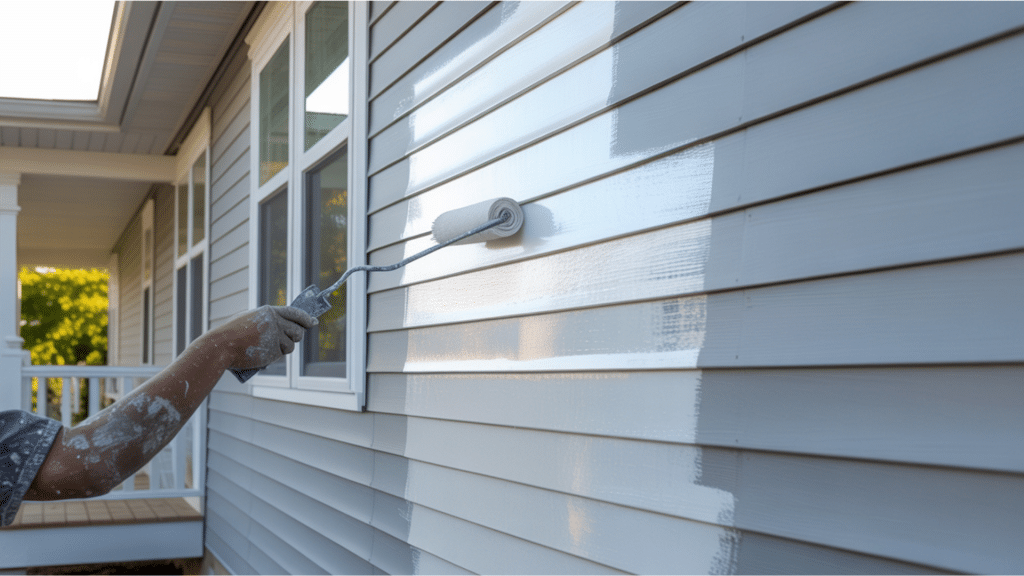Sweltering summer days can turn any home into an uncomfortable furnace.
The right curtains can reduce cooling costs and make rooms more comfortable without expensive renovations or new appliances.
In this blog, I’ll explain blackout curtains, which types perform best, and how to install them for maximum heat reduction.
Do Blackout Curtains Keep Heat Out?
Yes, blackout curtains do keep heat out, and they work through multiple mechanisms.
The thick fabric layers create a barrier that reflects sunlight before it can warm up the room. When sunlight hits windows, it typically converts to heat energy inside the space, but blackout curtains stop this process.
The curtains also trap air between the fabric and the window glass. This air pocket acts like insulation, similar to how double-paned windows work. The trapped air slows heat transfer from outside to inside.
Many blackout curtains have special reflective backing that bounces thermal energy back outside.
This combination of reflection, absorption, and insulation can reduce heat gain by 25-33% compared to uncovered windows.
Functions of Blackout Curtains
Blackout curtains serve multiple purposes beyond just blocking light.
These window treatments offer several benefits that make them popular choices for different rooms.
The following are the primary functions that make blackout curtains so effective, and add more benefits of owning blackout curtains for me.
1. Light Control
Blackout curtains block up to 99% of incoming light, creating complete darkness in any room.
This makes them perfect for bedrooms, nurseries, and home theaters where light control is essential for comfort and functionality.
2. Temperature Regulation
These curtains help maintain consistent room temperatures by blocking heat in summer and retaining warm temperatures in winter.
The thick fabric and backing materials create insulation barriers that reduce energy costs throughout the year.
3. Noise Reduction
The dense fabric construction absorbs sound waves and reduces outside noise by up to 40%.
This creates quieter indoor environments, making them ideal for bedrooms, offices, or homes near busy streets and airports.
4. Privacy Protection
Blackout curtains provide complete visual privacy both day and night.
Unlike sheer or regular curtains, these thick panels prevent outsiders from seeing into rooms, ensuring personal space remains private and secure always.
5. Furniture Protection
These curtains block harmful UV rays that can fade furniture, carpets, and artwork over time.
By filtering out sun damage, blackout curtains help preserve the color and quality of interior furnishings and decorations.
6. Energy Efficiency
Blackout curtains can reduce heating and cooling costs by up to 25%.
The insulation properties help maintain desired temperatures with less reliance on air conditioning and heating systems, lowering monthly utility bills significantly.
Pros and Cons of Blackout Curtains
Like any home improvement product, blackout curtains come with both advantages and disadvantages.
These trade-offs helped me make informed decisions about blackout curtains.
| Pros | Cons |
|---|---|
| Block 95-99% of light for better sleep | Can make rooms feel dark and closed-in during the day |
| Reduce energy costs by up to 25% | Higher upfront cost than regular curtains |
| Cut outside noise by 40% or more | Limited design and color options available |
| Provide complete privacy day and night | Heavier weight requires stronger curtain rods |
| Protect furniture from UV damage | May trap moisture in humid climates |
| Help regulate room temperature year-round | Difficult to clean and maintain properly |
| Create ideal conditions for shift workers | Can block natural light needed for mood |
| Improve home theater viewing experience | May fade or deteriorate faster than regular curtains |
The Types of Blackout Coverage
Blackout curtains come in different coverage levels depending on how much light they block. The amount of darkness they provide varies based on fabric construction and backing materials.
The following are the main types of blackout coverage available:
Room Darkening (85-95% Light Blocking)
Room darkening curtains reduce most light but allow some to filter through.
They’re perfect for living rooms and dining areas where complete darkness isn’t necessary but reduced glare and heat control are still desired benefits.
Blackout (95-99% Light Blocking)
True blackout curtains block nearly all light, creating almost complete darkness.
These work best in bedrooms, nurseries, and home theaters where maximum light control is essential for sleep, comfort, and optimal viewing experiences.
Thermal Blackout (99% Light + Heat Blocking)
Thermal blackout curtains combine maximum light blocking with superior insulation properties. They feature special foam or acrylic backing that reflects heat while maintaining darkness.
These offer the best energy savings and temperature control.
Complete Blackout (100% Light Blocking)
Complete blackout systems use additional side panels or tracks to eliminate all light gaps around window frames.
These custom installations provide absolute darkness for shift workers, photographers, or anyone requiring perfect light control.
Partial Blackout (70-85% Light Blocking)
Partial blackout curtains offer moderate light reduction while maintaining some natural brightness.
They’re ideal for offices, kitchens, and spaces where some daylight is welcome but glare reduction and privacy are still important considerations.
Energy Savings and Reducing Cooling Costs
Blackout curtains play a significant role in cutting energy costs by reducing the workload on air conditioning systems.
When sunlight hits windows, it converts to heat energy that forces cooling systems to work harder and consume more electricity.
Quality blackout curtains have reduced heat gain by 33%, which translates to 10-25% savings on my cooling bills during hot months.
The Department of Energy confirms that window treatments are among the most cost-effective ways to improve home energy efficiency.
During peak summer hours, blackout curtains prevent solar heat from entering rooms.
This means air conditioners run less frequently and for shorter periods, directly lowering monthly utility expenses while maintaining comfortable indoor temperatures
Thermal vs Blackout
Many people confuse thermal curtains with blackout curtains, but they serve different primary purposes. While both offer insulation benefits, their main functions and construction differ significantly.
| Feature | Thermal Curtains | Blackout Curtains |
|---|---|---|
| Primary Purpose | Temperature control and energy savings | Light blocking and darkness creation |
| Light Blocking | 70-85% light reduction | 95-99% light blocking capability |
| Insulation Level | Excellent thermal barrier properties | Moderate to good insulation qualities |
| Material Construction | Multiple layers with insulated backing | Dense fabric with light-blocking backing |
| Energy Savings | Up to 35% reduction in heating/cooling costs | Up to 25% reduction in energy bills |
| Best Room Types | Living rooms, offices, any climate-controlled space | Bedrooms, nurseries, home theaters |
| Seasonal Benefits | Year-round temperature regulation | Summer cooling and privacy benefits |
| Price Range | Moderate to high cost | Moderate to high cost |
| Installation | Standard curtain rod installation | Standard rod, may need blackout tracks |
| Maintenance | Easy to clean and maintain | More difficult to clean properly |
How to Use Thermal Blackout Curtains?
Using thermal blackout curtains effectively requires proper installation and daily habits. Mount them close to the window glass to create an air gap that boosts insulation.
Extend curtains at least 4-6 inches beyond the window frame on each side to prevent light leaks and heat transfer.
Close curtains during peak sun hours in summer to block heat gain. In winter, open them during sunny days to let the sunlight in, then close them at night to retain heat.
Make sure curtains reach the floor or windowsill to prevent air circulation that reduces their effectiveness.
Keep curtains closed consistently for maximum energy savings and temperature control benefits.
Wrapping It Up
I hope that this blog has answered your question – do blackout curtains keep heat out?
The key lies in choosing the right coverage level for each room and installing it properly. Whether someone needs complete darkness for better sleep or just wants to lower cooling costs, there’s a blackout solution that fits.
It is truly a saviour for me and my family every summer.


